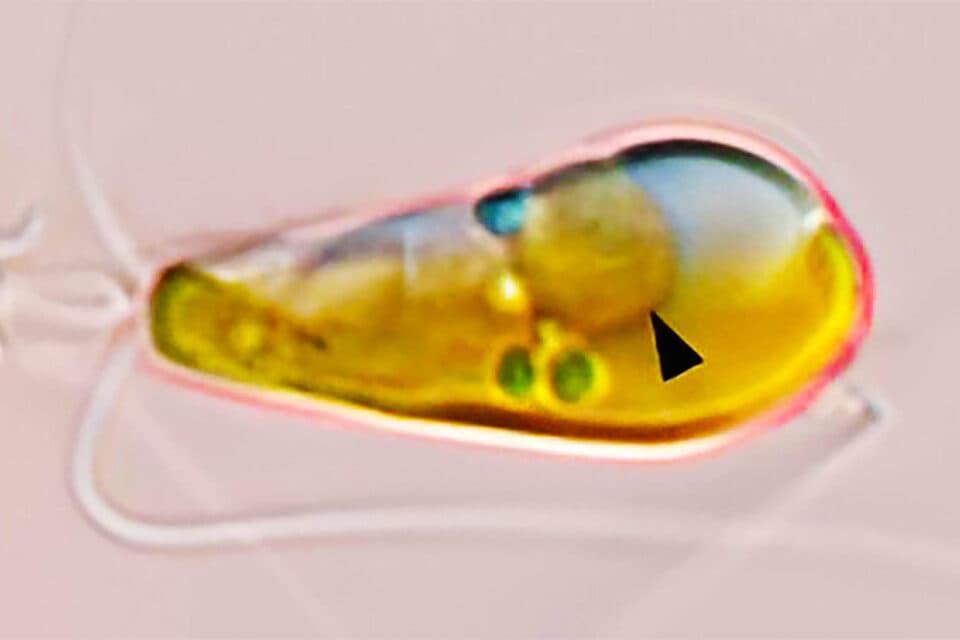A group of marine microbiologists released a paper claiming that a species of algae and a species of nitrogen-fixing bacteria, previously thought to be its own organism, is actually in an organelle of the algae.
This study, released on April 11, was by several universities including the University of California, Santa Cruz and Kochi University in Kochi, Japan. It relates to research being conducted by University of Rhode Island professors.
Nitrogen fixation is the conversion of nitrogen gas into usable nitrogen in the form of ammonia. This is an essential part of the nitrogen cycle, an ecological process in which organisms collect and use different forms of nitrogen as a nutrient.
The process of nitrogen fixation was previously thought to be only by a particular type of organisms, prokaryotic cells, but research shows a eukaryotic organism is capable of this initial step as well, according to a study called Nitrogen-fixing organelle in a marine alga.
Primary endosymbiosis is the process in which a eukaryotic cell absorbs a prokaryotic cell and turns it into an organelle, which is a structure within a cell that serves a particular purpose.
Mitochondria and chloroplasts, organelles that many students learn about in high school biology, are believed to have been once individual organisms that became organelles. This process holds high importance to biologists due to the functions that both mitochondria and chloroplasts have, Tatiana Rynearson said, a professor of oceanography at URI.
“This paper has shown really strong evidence that the nitrogen-fixing cyanobacteria are not just an endosymbiont, it’s on its way to becoming an organelle, which is important because it tells us the strength of the relationship,” Rynearson said.
This nitrogen-fixing organelle would be only the fourth instance of primary endosymbiosis happening in biology and it would appear it is in the early stages of development according to the study.
The study said that the previously classified cyanobacteria, atelocyabacertierium thalassa, have turned into an organelle dubbed the nitroplast. This organelle is found in the algae braarudosphaera bigelowii, a type of phytoplankton under the order coccolithophore.
Coccolithophores are an incredibly absent and productive marine phytoplankton found in many different ecosystems.
“The discovery of the organelle I think is big because it shows the potential of evolution, ” URI assistant professor Keisuke Inomura said.
His research involves quantitative analysis of microbiology with the help of computer modeling, Inomura said. He has also done research in nitrogen fixation and algae.
“It’s an implication of where evolution may be heading and this discovery of nitroplast suggests that in the future some big change may occur,” Inomura said.
Nitrogen-fixing organisms have special enzymes that convert atmospheric nitrogen gas into ammonia, Inomura said. These cells have other mechanisms that allow this ammonia to be used in the formation of amino acids, the foundational building blocks of proteins. This whole process uses chemical energy in the form of adenosine triphosphate (ATP).
As part of Rynearson’s lab, she grows various types of algae. Due to this experience, she is interested in how the research is conducted in regards to sampling.
“One of the cool things about this paper is that it’s really hard to grow these in the lab,” Rynearson said.
These researchers had to take special samples out in the field and bring them to a lab for analysis, adding a layer of difficulty to the study.
The braarudosphaera bigelowii species is found in a lot of different ocean habitats, but not found in every spot, Rynearson said. This species has been found everywhere from the Antarctic, the tropics, and in northern and southern temperate oceans.
“One thing that we are going to do when we look at the nitrogen fixer that we grow in the lab is carefully consider the possibility that these are organelles and not just endosymbionts,” Rynearson said. “This will maybe change how we do our experiments and how we think about interpreting our results”
Some of the research that is going on at URI as well as the findings of this study are intertwined with one another, Inomura said.
Ryneasron’s findings in her lab may support the study’s findings or refute parts, she said. She is looking at a different group of organisms and is interested in the kind of integration as relationships are present.
“We are still learning fundamental things about cell biology and about the diversity of how life is structured on earth,” Ryneasron said. “This fundamental thing is going to give us insights on how organelles are generated and help us understand life on earth and how it functions.”
With this study potentially changing the way scientists view nitrogen fixation and endosymbiosis, more discoveries and breakthroughs regarding the nitroplast could be coming in the future.

